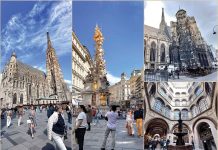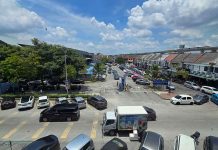Letter to the Editor
by Adrian Lim, Subang Jaya resident
I attended the Awareness and Action Programme (ANA) by Petronas Gas Berhad (PGB) on 2 August 2025 in USJ 7. This was a closed-door session for representatives of communities residing near the PGU (Peninsular Gas Utilization) gas pipelines. The event was jointly organised by Petronas Gas and the Subang Jaya ADUN’s office, and attended by YB Michelle Ng, senior management from Petronas Gas, MBSJ, the police, fire department and about 30 community representatives.
The ANA programme’s goal was simple but critical: to establish a frank dialogue about living safely with gas pipelines in our neighbourhoods. Rest assured, this is not the last ANA session, PGB promised more to come.
 What Are the PGU Pipelines?
What Are the PGU Pipelines?
The PGU network spans across Peninsular Malaysia, channeling natural gas from offshore Terengganu, down to Johor, and back north all the way to Perlis. This gas powers 40% of Malaysia’s electricity supply and fuels industries nationwide.
Built in the 1980s and 1990s to ASME B31.8 standards for gas transmission safety (standards written by the American Society of Mechanical Engineers) the PGU pipeline spans 2,675km.
At the session, PGB’s Head of Gas Transmission, M. Nasahie Akbar Ali, explained how every weld and joint was carefully inspected by third parties during construction, and how periodic inspections are still carried out today using advanced tools like Pipeline Inspection Gauges (PIGs) and SCADA systems for 24-hour leak monitoring.
 The Putra Heights Fire: What We Learnt
The Putra Heights Fire: What We Learnt
The April 1 pipeline fire in Putra Heights was a wake-up call. The fire raged for hours, damaging over 200 homes and injuring 150 people.
During the breakout session, PGB’s Amriel Roni, who heads the operations at the Shah Alam control centre, explained that the rupture was caused by soil movement, a localised ground condition, not sabotage or negligence. When the pipe failed, valves shut off gas flow quickly, but because the 36” pipeline between two valve stations holds 24 km worth of gas at 50-55 bar pressure, it had to burn off before the fire subsided. For perspective, our typical car tire pressure is merely 2 to 2.5 bar.
Nasahie addresed during his keynote speech that to keep the country’s lights on, PGB scrambled to source gas from Thailand to backfill supply on the morning of the fire itself. This was a reminder that this pipeline is not just a local matter, it is a national lifeline. Not only economic, but life and death. Imagine hospitals without electricity.
 What Safety Measures Exist?
What Safety Measures Exist?
PGB also outlined a layered safety approach to their pipeline:
– 24/7 SCADA monitoring for pressure drops and other indicators.
– Aerial surveillance with drones for intrustion into the right-of-way.
– 170 valve stations across the network, to quickly isolate sections of the pipelines in the event of leakages or fires.
– Strict right-of-way rules with no trees, structures or dumping allowed. Roots can push pipelines and shard of glass or metal can spark fire on dry vegetation during the hot season.
New measures are coming. Over 200 additional warning signs will be installed in Subang Jaya. Better soil and pipeline monitoring is being introduced, and there are talks with councils on gantries and barriers to keep heavy vehicles off vulnerable crossings.
Why the Public Matters Too
Despite all this, PGB faces constant challenges from illegal sheds, dumped waste and even trees planted on the right-of-way. These “small” encroachments complicate inspections and can become hazards.
As Mr Nasahie put it, “We need the public to be our eyes and ears.” Petronas has a 24-hour emergency line, and he urged residents to report anything odd such as unusual smells, fires or digging immediately. Petronas Gas Control Centre Hotline 1800-88-8757.
 My Reflections as a Resident
My Reflections as a Resident
I left the townhall reassured that PGB and MBSJ’s senior management know the stakes. Many of the engineers who built the PGU system in the 1980s now live in Subang Jaya, where the pipelines run beneath. They built it to last.
It is also clear that we cannot be complacent. The Putra Heights fire showed what can happen when nature interferes, not just humans. While this incident was deemed unavoidable, it forces us to ask if we as residents are prepared, and if authorities are uncompromising in enforcing pipeline safety rules.
Living With the Pipelines
The truth is, the pipelines were here long before most of us moved in. They carry the gas that powers our homes, factories and the prosperity we enjoy.
We may not be able to eliminate every risk, but we can reduce it by:
– Respecting the pipeline right-of-way.
– Reporting dumping, digging or suspicious activities.
– Demanding regular updates and townhalls from PGB and the local authorities.
The question is not whether we can live with these pipelines. The question is whether we can live with them safely. That will depend on Petronas, the authorities and all of us who live along the PGU.














